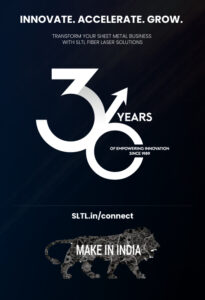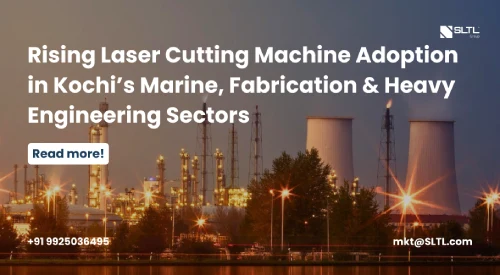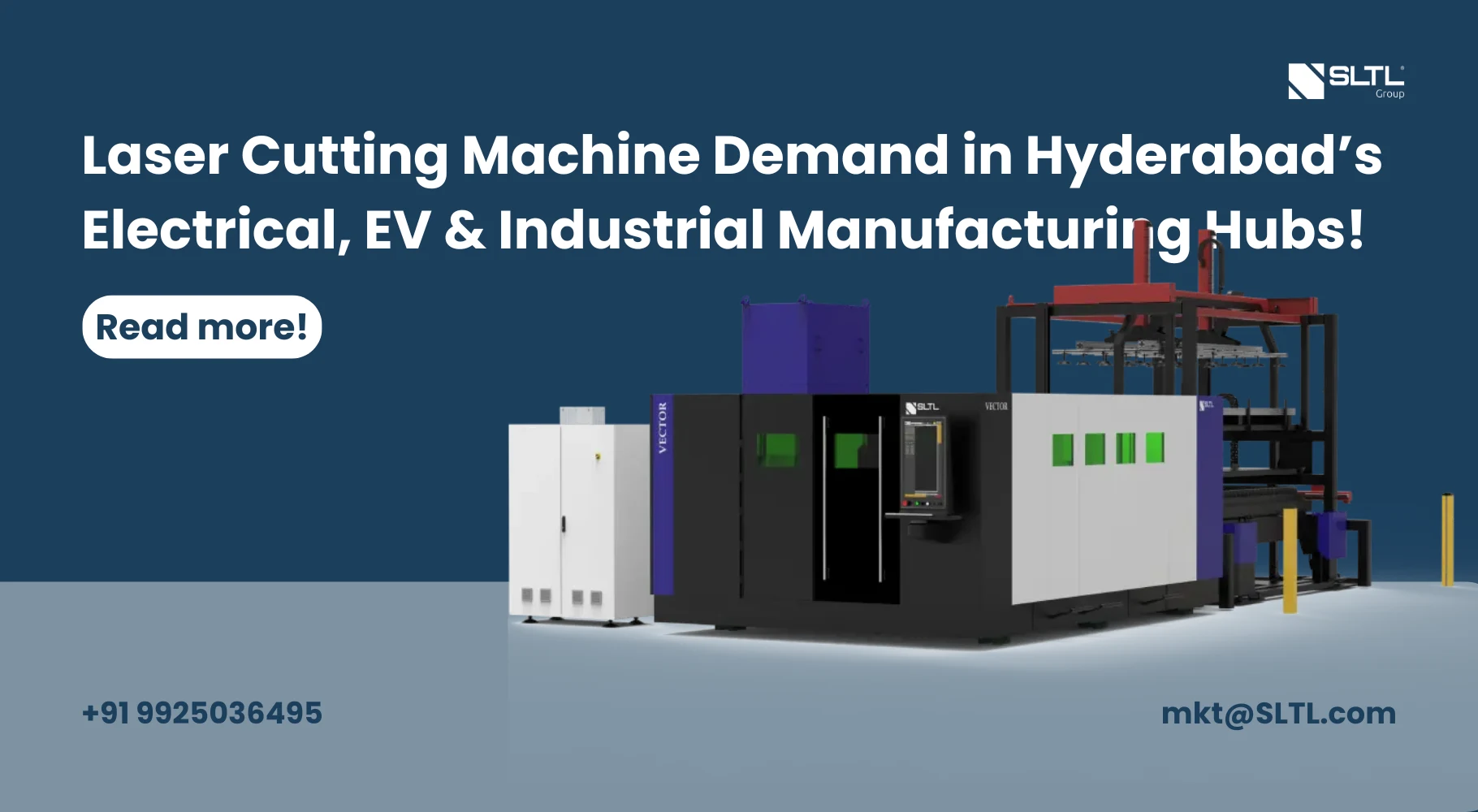Industries are going big and so are their fabrication needs. Meet the SLTL XLS, the long-chassis laser cutting machine built to slice 12-meter sheets with unmatched precision and speed. Redefine what’s possible in large-format metal cutting today.
Modern fabrication projects-from vehicle chassis to solar-frame assemblies and structural beams-are pushing manufacturers to rethink the limits of their cutting equipment. When your parts measure in meters rather than millimeters, traditional shop-floor laser cutters quickly become a bottleneck: repeated sheet repositioning, alignment drift, and weld-heavy join-ups add time, cost, and risk. So which laser cutting machine is built to handle true long-format work – sheets that run up to 12 meters? Meet the SLTL XLS: a purpose-built long chassis, long bed, large-format laser cutting system engineered to cut long sheets with industrial-grade precision and throughput.
This blog explains what makes a machine capable of cutting 12-meter sheets, why long-format laser cutting matters, and how the XLS addresses the practical, production and business challenges of large-part fabrication.
Why “long” matters: the practical problems with short-bed machines
Before we dive into the XLS, it helps to understand why typical laser cutters fall short for long parts.
- Repositioning errors. Small machines require multiple setups for a single long part. Each reposition introduces alignment error and increases cycle time.
- Thermal drift and distortion. Welding and post-processing to join shorter sections causes distortion that’s expensive to correct.
- Throughput limits. Stopping and restarting for every sheet seam kills production rates and wastes labor hours.
- Material handling complexity. Moving and supporting very long sheets using cranes and manual labor raises safety and scheduling challenges.
A machine that truly cuts 12-meter sheets must remove these friction points: it must provide a single, continuous work envelope, precise motion control across the full length, and automation-ready sheet handling.
What type of machine can cut 12-meter sheets?
At a high level, a long-format laser cutting machine designed for 12-meter sheets needs five core attributes:
- Extended work envelope / long bed. The gantry, linear guides and bed must be engineered for long spans (10-12 m and beyond).
- Rigid, thermally stable structure. A reinforced frame and thermal management preserve accuracy across long cycles.
- High-power, flexible laser source. To handle a wide thickness range (thin stainless to thick mild steel), power should scale from a few kW to tens of kW.
- Precision motion and multi-axis control. Coordinated axes and backlash-free drives maintain tolerances along the full length.
- Material handling & automation readiness. Integrated conveyors, rollers, vision alignment and robot interface reduce manual intervention.
SLTL’s XLS was built around precisely these principles – it’s an example of a heavy-duty long bed laser cutting system and a large format laser cutting machine meant for continuous, high-accuracy long-part fabrication.
The SLTL XLS – designed specifically for long parts
While many vendors talk about “large format,” the XLS is engineered from the ground up for long-sheet work: think of it as a long chassis / long bed / long plate laser cutting system that removes the need for sectional cutting and joined assemblies.
Key design features that enable 12-meter cutting
Extended bed architecture: The XLS offers an unbroken work envelope up to 12 meters, so parts like chassis rails, solar frames and structural beams are cut in a single setup. This eliminates seam matching and reduces rework.
- Robust mechanical frame: A reinforced steel structure optimized through finite element (FE) analysis prevents bending and vibration, keeping cuts accurate even during heavy continuous operation.
- Precision linear drives: Backlash-free ball screws, high-accuracy guideways and well-tuned servos produce the repeatability needed to hold dimensional tolerances over long spans (measured in ±0.05 mm/m in many configurations).
- High-power fiber laser options: Laser sources scale from lower kW levels for thin-gauge precision up to very high-power units capable of cutting thick structural steel. This flexibility makes the XLS a true extended bed fiber laser cutting machine.
- Advanced vision and alignment: Integrated cameras and edge detection remove manual setup time and ensure the laser starts cutting at precisely the right location across the entire sheet.
- Integrated handling: An open-body layout with roller conveyors or automated material load/unload systems reduces manual handling, speeds job changeover, and pairs well with robotic loaders.
- User-centric control software: A modern HMI that supports CAD imports, nesting algorithms, and simulation ensures operators can prepare long jobs efficiently and verify toolpaths before cutting.
What materials and thicknesses can a long-format laser handle?
A key advantage of a machine like the XLS is material versatility. With appropriate laser power and optics:
- Thin stainless and aluminum sheets: high speed with excellent edge finish.
- Medium-thickness mild and alloy steels: efficiently cut with minimal heat-affected zone.
- Thick structural plates (dozens of millimeters): possible with higher-power sources and optimized cutting heads.
Because the XLS supports a power range and robust motion, it can serve industries from lightweight renewable-energy frames to heavy-gauge construction components.
Where long-format cutting delivers the biggest gains
Adopting a machine that cuts 12-meter sheets changes downstream processes across many industries:
- Automotive & commercial vehicles: Single-piece chassis rails and long underframes cut in one pass reduce welding and alignment work, improving assembly accuracy and throughput.
- Rail & metro infrastructure: Long carriage components and support plates come out accurately positioned, lowering rework on final assembly lines.
- Construction & structural steel: Long beams and trusses with perfectly aligned holes and slots mean faster on-site fitment and fewer surprises during erection.
- Renewables (solar/wind): Long, consistent mounting profiles and perforated frames speed installation and improve system reliability.
- Shipbuilding & marine: Large hull plates and structural members benefit from burr-free, repeatable cuts and less finishing.
- Aerospace & defense: High-accuracy batch parts – long profiles for drones, supports and assemblies – maintain performance-critical tolerances.
Production and business benefits of cutting long sheets in one pass
Switching from multi-section cutting to a single long-bed workflow yields measurable returns:
- Reduced cycle time: No multiple setups or repositioning – a single continuous cut significantly reduces operator time per part.
- Lower scrap and rework: Accurate nesting and continuous cutting lower material waste and eliminate seam errors that require fixes.
- Consistent part quality: Dimensional consistency across the full length reduces assembly and welding adjustments later.
- Labour and safety gains: Automated handling cuts physical strain and risk associated with moving long sheets manually.
- Faster product ramp-up: Prototypes to volume production are easier because repeatable single-pass cutting removes process variability.
Collectively, these improvements translate into better throughput, improved margins, and faster response to customer demand.
Choosing the right long-format laser system: questions to ask
Not all long machines are created equal. When evaluating vendors or models, prioritize these questions:
- What is the true continuous bed length and supporting frame design? (Can the machine handle continuous 12-meter work without seams?)
- What laser power options are available and how do they map to your material mix?
- How is material handling solved – conveyors, rollers, robotic integration?
- What is the motion control architecture and the stated tolerance over long spans?
- Does the machine include vision/edge detection to reduce setup time?
- What software workflows are provided for nesting, CAD import and simulation?
- What local service and spare-parts support exists – particularly important for large industrial installations?
- How will the machine integrate with your factory automation and Industry 4.0 systems?
If the answers align with long-bed precision, high-power flexibility and automation readiness, you’re on the right path.
Final thoughts: when a long-bed laser is the right investment
If your manufacturing regularly produces parts 10 meters or longer, if assembly precision is mission-critical, or if you want to remove the inefficiencies and variability of sectional cutting, a long chassis or long bed laser cutting machine is a strategic investment. Equipment like the SLTL XLS – engineered for 12-meter continuous cutting – converts long-part fabrication from a logistical headache into a predictable, high-quality, and automated process.
In short: when you need to cut 12-meter sheets with repeatable precision, minimal handling and high throughput, choose a purpose-built long-format laser cutting system. The benefits cascade across operations: fewer seams, less rework, faster cycles, improved safety, and better margins.
If you’re evaluating long-format capability for your shop floor, map your typical part sizes, thickness range and automation goals – then compare those requirements against bed length, laser power, motion accuracy and handling options. For manufacturers building bigger and aiming higher, the right long-bed fiber laser cutting machine can be a transformational step toward faster, cleaner and more efficient production.






